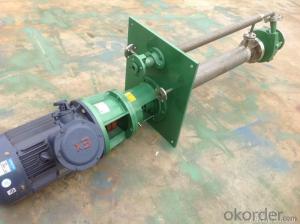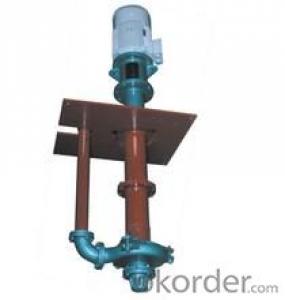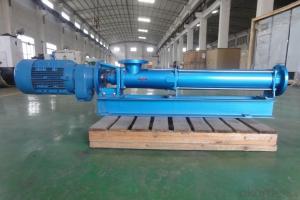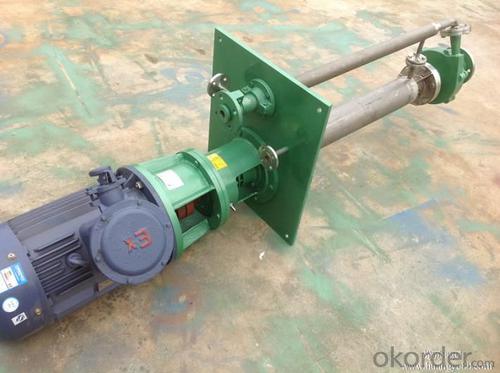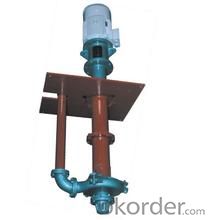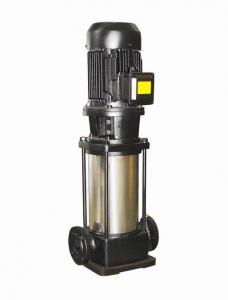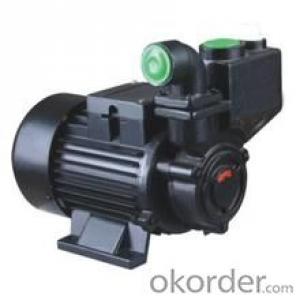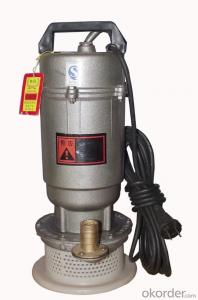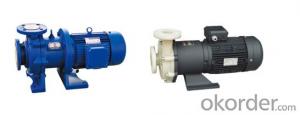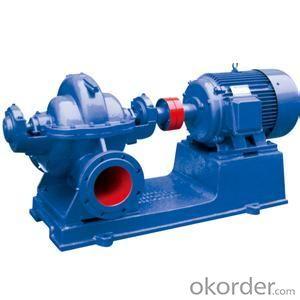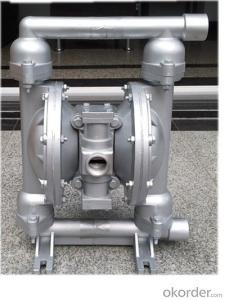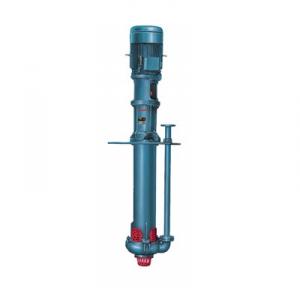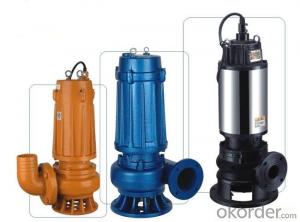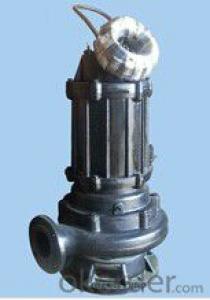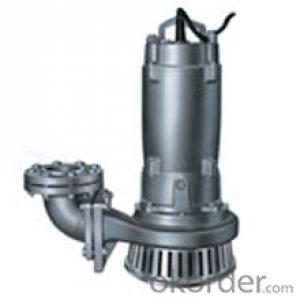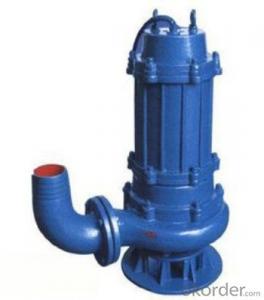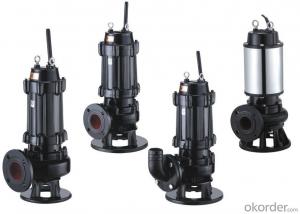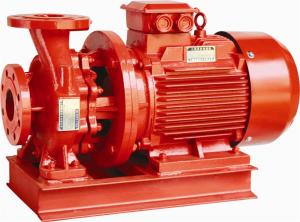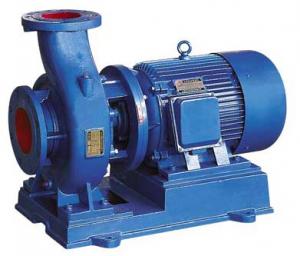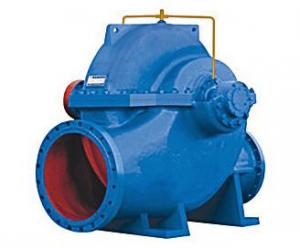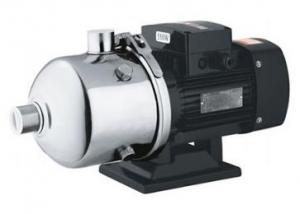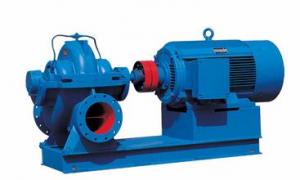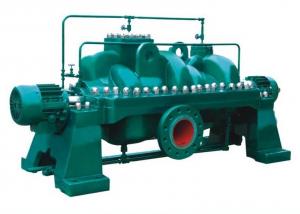SP High Pressure Processing Submersible Slurry Pump
- Loading Port:
- Shanghai
- Payment Terms:
- TT OR LC
- Min Order Qty:
- 1 unit
- Supply Capability:
- 100 unit/month
OKorder Service Pledge
OKorder Financial Service
You Might Also Like
SP High Pressure Processing Submersible Slurry Pump
Basic Info. of SP High Pressure Processing Submersible Slurry Pump
Model NO.:100RV-SP
Pump Casing Combined:Verticaljoint Surface Pump
Impeller:Closed
Working Pressure:Low Pressure Pump
Position of Pump Shaft:Vertical Pump
Usage:Pump
Impeller Number:Single-Stage Pump
Influent Type of Impeller:Single Suction Pump
Mounting Height:Since Irrigation Centrifugal Pumps
Outlet Diameter:40-200mm
Capacity:12.6-597m3/H
Head:5-34m
Speed:400-2200r/Min
Matched Power:1.1-160kw
Temperature:Less Than 80ºC
Export Markets:Global
Product Description of SP High Pressure Processing Submersible Slurry Pump
SP pumps are vertical, centrifugal slurry pumps submerged in sump to work. They are designed for transfer abrasive, large particle and high density slurries. These pumps have no need of any shaft seal and sealing water. They can also be operated normally for insufficient suction duties. Wear-resistant materials are applied for the wet part. Two driving forms include BD(Belt Pulley Drive) and DC(Direct Connection Drive).
Performance Range of SP High Pressure Processing Submersible Slurry Pump
Outlet diameter: DN=40-200mm(1.5"-8")
Capacity: Q=12.6-597m3/h
Head: H=5-34m
Speed: N=400-2200r/min
Matched power: P=1.1-160kW
Working Temperature: Less than 80º C
Model Description of SP High Pressure Processing Submersible Slurry Pump
40PV-SP:
40---Outlet diameter(mm)
PV---Bracket mode
SP--Sump pump
4. APPLICATIONS;
A. Sump drainage
B. Floor drainage
C. Mill sumps
D. Carbon transfer
E. Magnetite mixing
Feature of SP High Pressure Processing Submersible Slurry Pump
A. Vertical construction, less Installation Space.
B. Adjustable side plate and impeller.
C. Equiped with replaceable shaft protection sleeve.
D. Smooth and stable operation
E. Special materials or casting for specific liquid
FAQ
Q: Can your pumps mount Eff.1 motors
A: Currently, only on request though this will shortly be a CNBM standard.
Q: Are your pumps protected against dry running?
A: No, unprotected centrifugal pumps are not generally designed for dry running. It is important to give us or your dealer as much information as possible about the system in which the pump is used. Inlet pressure, the type of liquid to be pumped, together with relative density, viscosity and temperature, for example, are required in order to allow CNBM to recommend the right pump with the right gaskets for a long operating lifetime.
Q: How can I get trained on CNBM products?
A: Yes, we provide training courses in our factory (products, general and specific pump technology, hydraulics, and practical applications). Please consult your sales manager or get in touch with our headquarters for more information.
Q: Are your pumps cheaper than those of your competitors?
A: CNBM aims to give its customers the highest standards of quality and service and delivery times, all at a reasonable price.
Q: Do you have self-priming pumps?
A: Yes, our product portfolio also includes two ranges of self-priming pumps: self-priming electric pumps and self-priming side channel pumps.
Q: Is it really necessary to fit a bleed valve for the boxes?
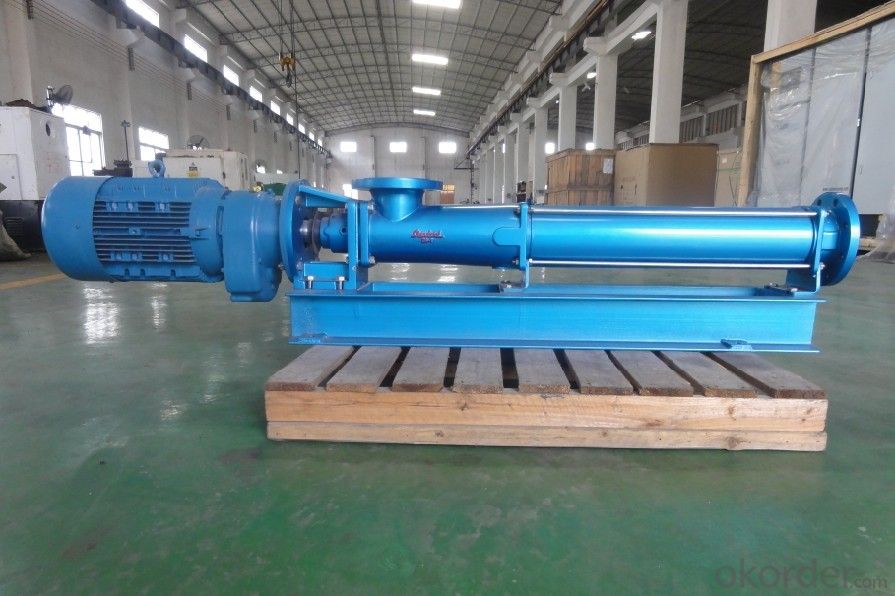
- Q: Car is ford taurus 98.The car had some problems including overheating as thermostat was bad so was was not working. i drove it 25 miles to garage (i had to stop once because too hot to let it cool), i brought it to Ford who replaced the thermostat. Now they tell me some bits of thermostat broke and they need to replace the waterpump and want $620 for it. The other repair were also extremely expensive and i want to bring it to another garage 1.3 miles away on flat road.-1- is it safe to drive 1.3 mile with no water pump or should iget it towed?-2- should i have to pay for the water pump or is it ford's fault if they did not remove the bits of broken thermostat before reconnecting new thermostat to hose ? Can i prove that the pump was working when i came in if i drove 25 miles with it ?Thanks for your help.
- alright- you have a lot of things going on here. you have an older model vehicle with what sounds like a couple of issues. your best bet is to have the vehicle towed. letting your vehicle overheat is it not a good thing - can ruin your engine. Best not to risk it even tho 1.3 miles is nothing really. if you feel the shop is at fault. And it's a ford retailer - contact the fort corporate offices and file a complaint and ask for good will for the repair and see what happens. Couldn't hurt to ask. Take care and good luck.
- Q: My car started to leak anti-freeze Really fast, so i had to pour water in there to keep it from overheating, so i took it to my mechanic, and left it there overnight, and they call me the next morning and tell me that the water pump needs to be fixed, and a few belts got water damage on them, and a a few driving belts need to be replaced. he said it would come out to be 695.97, does that sound like the right cost?
- actual okorder ....bet its 150 dollars..... around...u may get someone to do it for 400 to 500... water damage on the belts LOL,,,every time u go through a puddle they get water on them
- Q: Fire pump room is required to set up water pump control room?
- What is the concept of fire pump control room? If there is a control room host automatic alarm automatic fire alarm system of words (through the pump distribution box can also control) can control the fire pump, if there is no distribution box automatic alarm system you can through the pump room control
- Q: Difference between primary hot water pump and two hot water pump
- A hot water pump is a water pump circulating between the boiler and the heat exchanger, and the two hot water pump is a circulating water pump between the heat exchanger and the user. That is, there is no relationship between a water pump and heating users.
- Q: I need instructions
- need to know what type of car and motor size
- Q: I have a 1 HP water pump that will pump water through a 1 and 1/2hose. What is the approx. GPM (just to have a reference) of a pump like this?
- many times the water pumps are AC grant pumps. in AC grant, you could not exchange the enter voltage and hence the area of utilising a million hp pump as 0.5 hp does not upward push up. ofcouse you could utilise 0.5 of its potential to pump water however the relax 0.5 would be wasted as warmth capability or frictional loss. the element is a a million hp pump will consume a similar potential what ever potential u choose to apply it.
- Q: I have a 1997 15hp Mercury 2-stroke outboard. When I run it it runs great and does what i want it to do. However, sometimes it doesn't pee. I can still hold my hand in the stream when it does but its very very hot. It always pees when i run the motor WOT but when im just chugging along it goes out for a bit and then comes back on. Is this supposed to happen? I was told by my dad that the thermostat regulates the pump so that it doesn't cool the engine down too much. Any and all advice is greatly appreciated
- Some Mercs only pee when the thermostat is open,especially the smaller ones.Trace the pee hose back to the engine.If it runs to the thermostat housing,it's one of those engines.
- Q: i have a 2000 chevy malibu (i know it sucks) i fixed the intake manifold gaskets (upper and lower) thermostat and its still leaking and sometimes overheating. my next thought is its the water pump. there's no crack in the radiator or hoses is there anything else that can cause it to overheat besides these. what about vacuum leakage? o2 sensors?
- some other possible causes of overheat: lean mixture inadequate oiling poor circululation due to restriction in water lines
- Q: I've noticed after driving my car for a while recently it squeals while accelerating. I'm wondering if its the water pump cause I've had a coolant leak for a while. I poured alluminum sealer in the reservoir and its stopped the leak almost completely though. If it was a broken pump, would this sealer have stopped the leak like it has? I drive a 2000 saturn sl2
- That okorder /
- Q: There is a 5.5KW before the pump head is now 25 meters and flow of 20 cubic meters, but not up to the requirements, I think this is like with a motor pump, lift more than 20 meters, the flow is about 40 cubic meters of water pump, please inform the models and parameters, thank you
- With the motor pump are pump according to the actual need of work with you in the head, under the same water doubled, the motor is certainly not enough, you should this motor pump change together in order to meet the requirements of.
Send your message to us
SP High Pressure Processing Submersible Slurry Pump
- Loading Port:
- Shanghai
- Payment Terms:
- TT OR LC
- Min Order Qty:
- 1 unit
- Supply Capability:
- 100 unit/month
OKorder Service Pledge
OKorder Financial Service
Similar products
Hot products
Hot Searches
Related keywords
